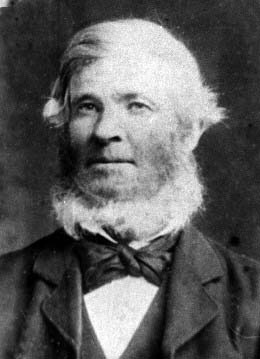
CHAPTER TWO Australia:- Early beginnings
About a fortnight after his arrival, James was engaged by a Mr John McKellar of "Knebsworth" as a farm labourer at 55 pounds a year. 1 "Knebsworth" was a pastoral run of some 12,000 acres, located about six miles west of Macarthur in western Victoria. The original bluestone homestead is still standing and at the time of my visit around 1980, was lived in by the Ryan family who had owned it for the previous fifty years. The McKellar family was well known in the district and in State political circles. The family had emigrated from Scotland in 1848 and John McKellar purchased Knebsworth ten years later. Interestingly in Geelong in 1849, John's son Thomas, married a Catherine McColl who was a granddaughter of my ancestors, Archibald and Margaret Campbell of Lerags in Scotland. They will feature later in this story.
The details of the next fifteen years or so are rather sketchy although it seems that James prospered; at least he prospered to the extent that he was able to raise and support an eventual family of eleven children, the last eight being colonial born. 2 Of these William is known to have been born at Hamilton in 1860, Elizabeth at South Hamilton on Feb 14th 1862, Annie at Muddy Creek near Hamilton in 1863, Henry at Hamilton in 1865, John at Hamilton in 1867 or 1868 and Jane at Dunkeld in 1870. Perhaps the family lived in the same place and the place of birth was recorded differently when registered as all the places are in the same general area, or perhaps the family did move around during this time. 3

James Bond
The Selection Act of 1869 paved the way for many small farmers to take up land as the large stations and pastoral runs of the squatters were broken up. It seems likely that James was an early selector in the Horsham district as an obituary for his wife Elizabeth published in the "Victorian Primitive Methodist" magazine (reproduced later in this book) mentions that she joined the local church at Kalkee in 1873. Perhaps this date represents a "conversion" to Methodism as after all both James and Elizabeth were both listed as C of E. in the shipping records; or perhaps the date represents their arrival in the district. In any case James was very active in the local Methodist congregation 4 where he acted as prayer leader almost from the beginning, since it was only in 1872 that the first ever Methodist church service was conducted in the Wimmera. 5 A Methodist church was constructed at Kalkee in 1876 and later moved to a site adjacent to the Kalkee school before it was demolished in 1975. A plaque marks the site today at Kalkee and it is most likely where James and his family worshipped. According to Cis Smith, a grand-daughter of James, who was quoting a recollection of her mother, the first crops were planted by hand with all children including the girls, being required to assist.
The next event in the story concerns Charles Henry Bond, the second son of James. A few years after the family's arrival in the Kalkee district Charles married the daughter of another early selector in the area, a woman named Betsy Featherby. Perhaps the families were already known to one another, for as we shall shortly see the Featherby's had lived in the Hamilton area as well. Whether or not the couple had known each other prior to coming to the Wimmera, the marriage took place at Darragan, a little south of Horsham (the precise date is unknown. It was registered in 1878 but there is often a time lag between the date of the event and the date of its registration), and on April l2th 1878, William James, the couple's first child was born at Kalkee. Here however I will pause and retrace the steps that have brought Betsy Featherby into this story.
GO TO CHAPTER TWO FOOTNOTES
GO TO CHAPTER THREE
RETURN TO CONTENTS PAGE